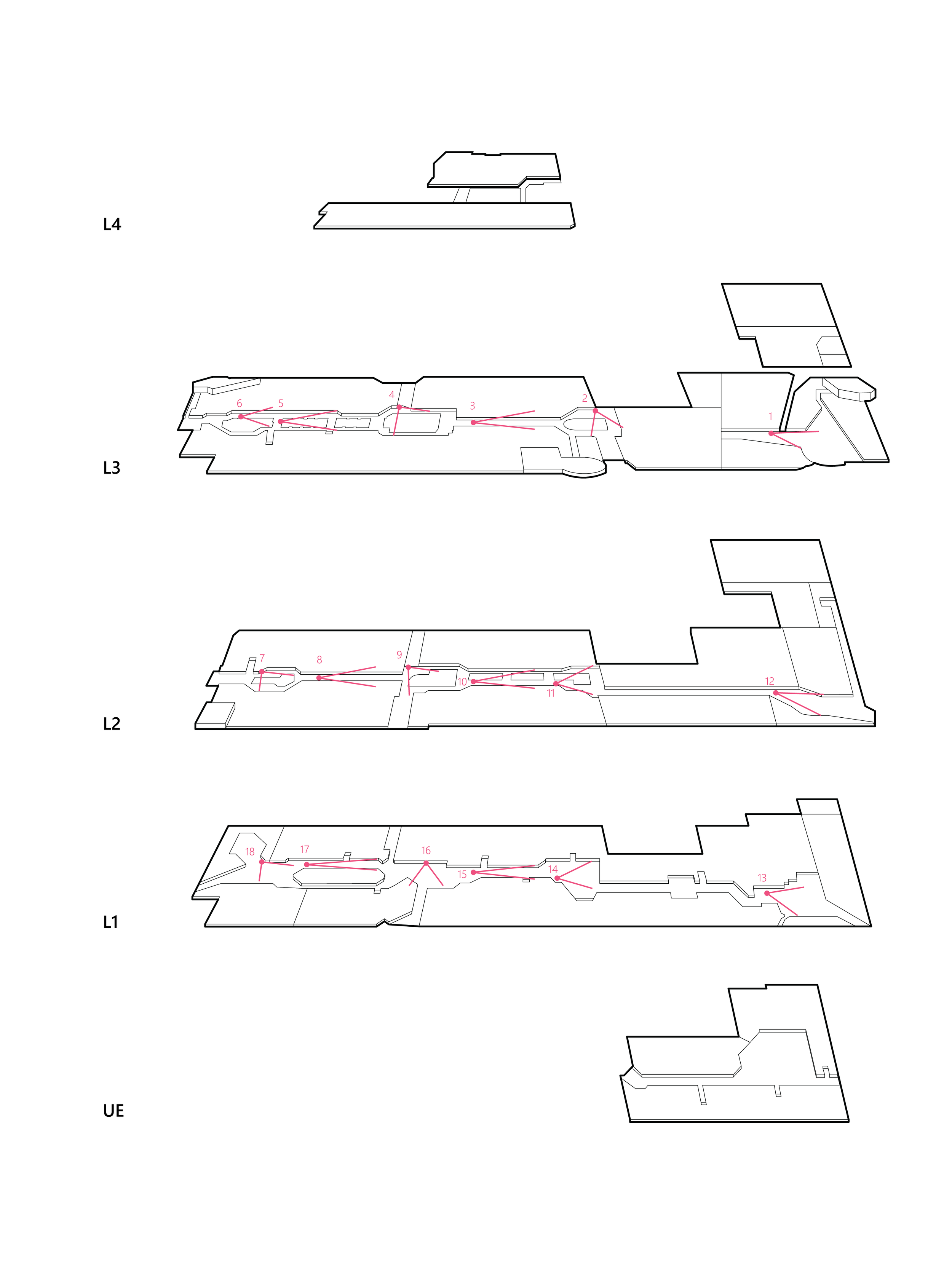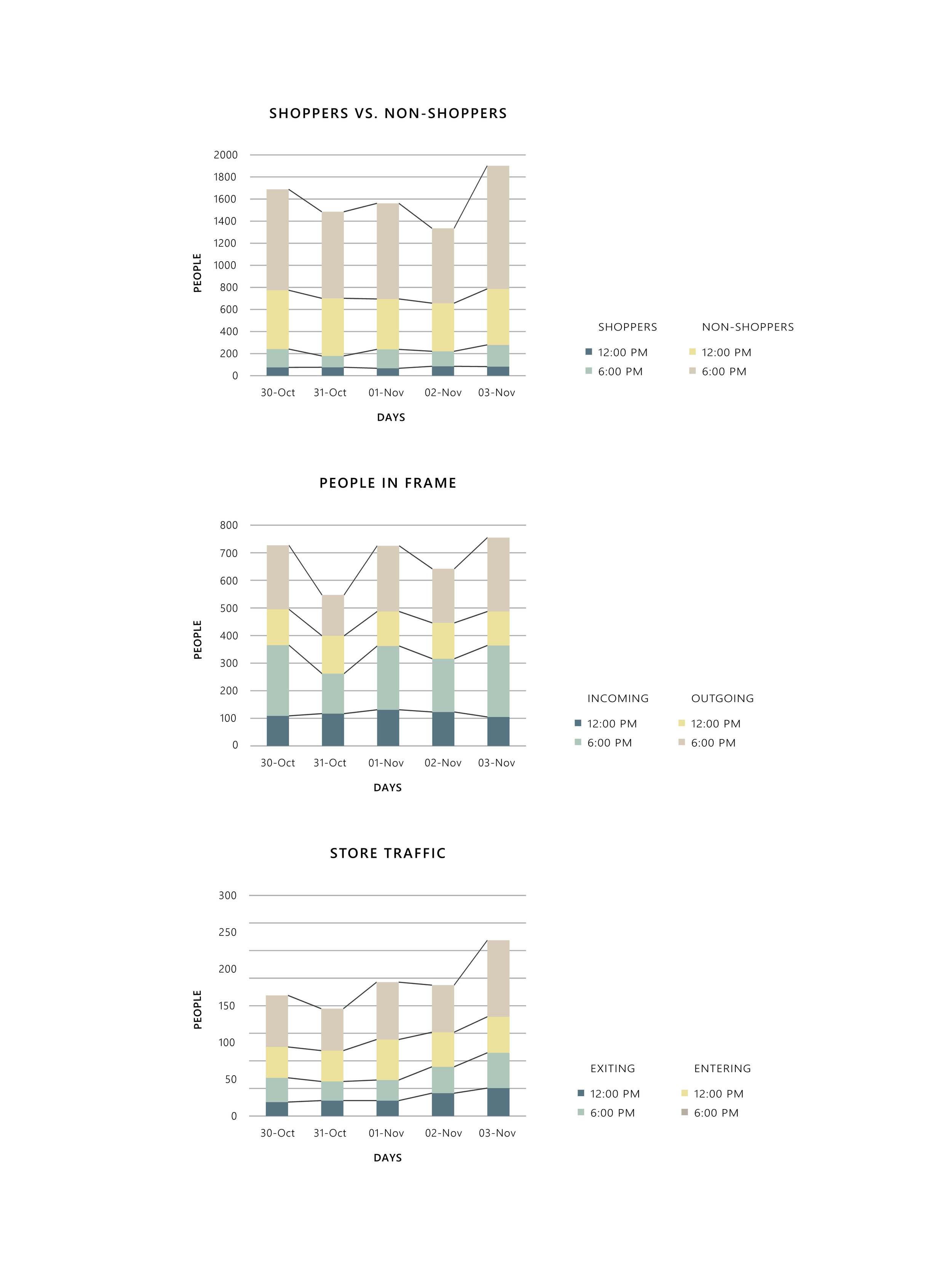observation
Observations conducted in October revealed patterns in pedestrian activity across the mall’s levels, showing that the majority of visitors use the Eaton Centre as a sheltered route rather than a shopping destination. Analysis of recordings taken during peak hours at key points indicated that the highest pedestrian activity occurred near major stores like Apple and Nordstrom, as well as around the atrium. Smaller booths located centrally, particularly near the atrium, attracted significant interest. However, the ratio of visitors entering stores to those passing through was relatively low, suggesting the mall’s role as both a social and transitional space.
The observation revealed areas in need of improvement. Pedestrian flow was faster in spaces without access to the atrium, while social spaces encouraged longer stays. Seating was concentrated near the atrium, offering limited rest opportunities elsewhere. Despite these challenges, the Eaton Centre remains a place where people gather, socialize, and explore, providing an indoor respite from the busy urban environment. The analysis also highlighted how human behavior within the mall is influenced by factors like discounts and product launches, reinforcing the unpredictability of consumer habits. The Eaton Centre thrives on its ability to balance its roles as both a shopping destination and a critical urban pathway.




